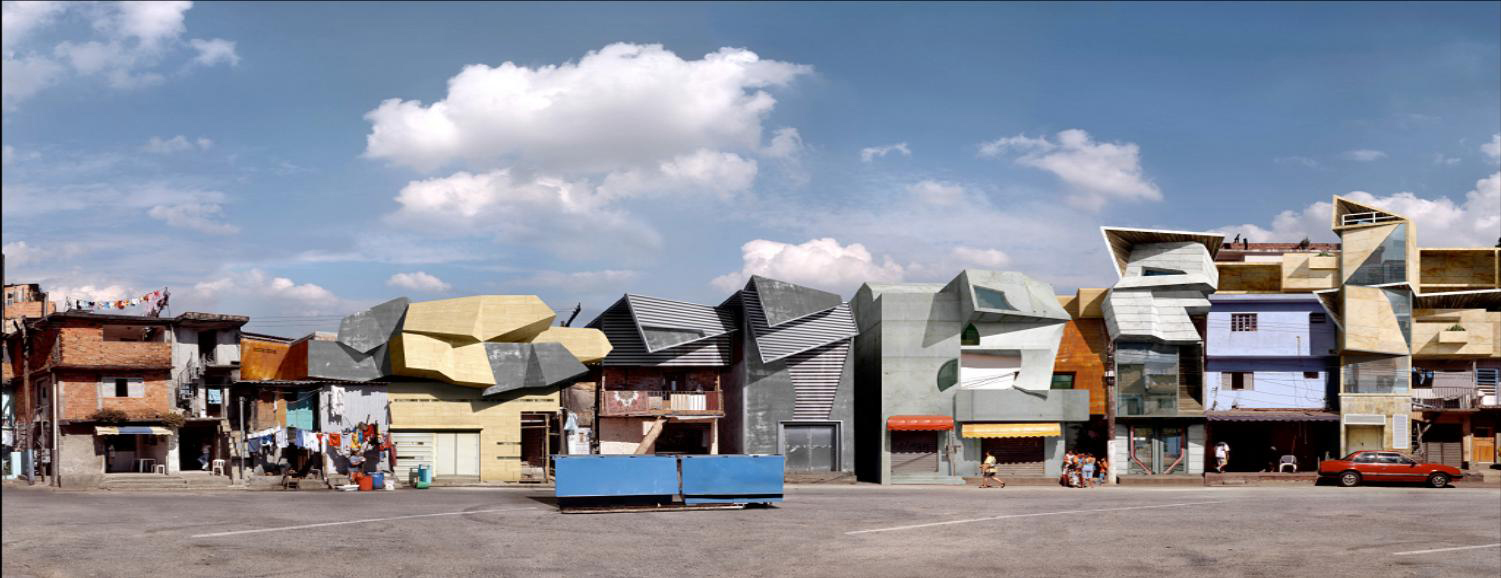About the Photographer
González, Dionisio
Spanish, b. 1965
Over a quarter of Brazil's population lives in poverty, with millions of people residing in the sprawling favelas of the nation's larger cities. In the absence of zoning regulations and infrastructure, the residents of these shanty towns freely modify and expand their dwellings, giving rise to a landscape in constant flux. The favelas take shape from within—a process of perpetual self-assembly—rather than being preplanned and formed from outside by those in positions of power. Artist Dionisio González digitally stitches together photographs of the favelas in São Paulo, Brazil into long panoramas, while integrating bits and pieces of pristine, contemporary architecture. The results plausibly combine existent and fictional components, blurring the border between document and fabrication. In contrast to more common representations of the favelas—which frequently sensationalize the prolific violence and destitution of the slums—González sympathetically portrays them as a distinctive culture and a fluid spatial model that might be embraced in future efforts to improve living conditions.
Eschewing the institutional desire to rebuild the slums with a "rational," ordered structure, González's photographs provide an alternative conceptual model for urban planning. His work, in this respect, is a response to the Brazilian government's failed urban renewal initiatives, such as the Proyecto Cingapura in São Paulo. These projects, which proceeded to demolish some of the country's favelas and relocate residents to new high-rise blocks of low-cost apartments nearby, have been criticized for neglecting to maintain the new buildings, for failing to consider the ways people actually live, and for placing unrealistic financial burdens on those who were supposed to benefit from them. As a hypothetical proposal rather than a set of specific plans, González's photographs are idealizations of the favelas—openly aestheticizing, and seductive in their detail, lush color, and formal vitality. At the same time though, his photographs are provocatively ambiguous, requiring us to weigh what we are seeing. In this light, his works are as much an an exploration in innovative urban design as they are an appeal for increased social responsibility.
González studied at the University of Seville where he received his PhD in Fine Art in 1996. He lives and works in Seville, Spain.
